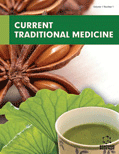Abstract
Childhood Obesity (Athi Dhoola noi) starts over from the young age due to various causative factors even it may deal from the infancy. The obesity in such age causes various complications to the each and every body tissues right from the connective tissues to the genital tissues. The susceptibility with the obesity for cardiac and diabetic issues is high since it interferes with its metabolism. Over the past three decade the prevalence of overweight and obesity has increased substantially [1]. Globally, an estimated 170 million children (aged < 18 years) are estimated to be overweight, and in some countries, the number of overweight children has trebled since 1980. The high prevalence of overweight and obesity has serious health consequences. Raised body mass index (BMI) is a major risk factor for diseases such as cardiovascular disease, type 2 diabetes and many cancers (including, colorectal cancer, kidney cancer and Oesophageal cancer). These diseases often referred to as Non-Communicable Diseases (NCDs), not only cause premature mortality but also long-term morbidity. In addition, overweight and obesity in children are associated with significant reductions in quality of life (QoL) and a greater risk of teasing, bullying and social isolation and Stigmatization. Due to the rapid increase in obesity prevalence and the serious health consequences, obesity is commonly considered as one of the most serious health challenges of the early 21st century. This article briefly explains the importance and it negative impacts of Childhood obesity in a proposed manner.
Keywords: Athi dhoola rogam, Child hood Obesity, Non-communicable diseases, Siddha Medicine.
Current Traditional Medicine
Title:Review of Childhood Obesity (Balar Athidhoola Rogam) in Traditional Siddha Indian Medicine
Volume: 1 Issue: 2
Author(s): D.K. Soundararajan
Affiliation:
Keywords: Athi dhoola rogam, Child hood Obesity, Non-communicable diseases, Siddha Medicine.
Abstract: Childhood Obesity (Athi Dhoola noi) starts over from the young age due to various causative factors even it may deal from the infancy. The obesity in such age causes various complications to the each and every body tissues right from the connective tissues to the genital tissues. The susceptibility with the obesity for cardiac and diabetic issues is high since it interferes with its metabolism. Over the past three decade the prevalence of overweight and obesity has increased substantially [1]. Globally, an estimated 170 million children (aged < 18 years) are estimated to be overweight, and in some countries, the number of overweight children has trebled since 1980. The high prevalence of overweight and obesity has serious health consequences. Raised body mass index (BMI) is a major risk factor for diseases such as cardiovascular disease, type 2 diabetes and many cancers (including, colorectal cancer, kidney cancer and Oesophageal cancer). These diseases often referred to as Non-Communicable Diseases (NCDs), not only cause premature mortality but also long-term morbidity. In addition, overweight and obesity in children are associated with significant reductions in quality of life (QoL) and a greater risk of teasing, bullying and social isolation and Stigmatization. Due to the rapid increase in obesity prevalence and the serious health consequences, obesity is commonly considered as one of the most serious health challenges of the early 21st century. This article briefly explains the importance and it negative impacts of Childhood obesity in a proposed manner.
Export Options
About this article
Cite this article as:
Soundararajan D.K., Review of Childhood Obesity (Balar Athidhoola Rogam) in Traditional Siddha Indian Medicine, Current Traditional Medicine 2015; 1 (2) . https://dx.doi.org/10.2174/2215083801666150701164340
| DOI https://dx.doi.org/10.2174/2215083801666150701164340 |
Print ISSN 2215-0838 |
| Publisher Name Bentham Science Publisher |
Online ISSN 2215-0846 |
 11
11 1
1
- Author Guidelines
- Bentham Author Support Services (BASS)
- Graphical Abstracts
- Fabricating and Stating False Information
- Research Misconduct
- Post Publication Discussions and Corrections
- Publishing Ethics and Rectitude
- Increase Visibility of Your Article
- Archiving Policies
- Peer Review Workflow
- Order Your Article Before Print
- Promote Your Article
- Manuscript Transfer Facility
- Editorial Policies
- Allegations from Whistleblowers
- Announcements
Related Articles
-
Genetic and Epigenetic Heterogeneity in Cancer: The Ultimate Challenge for Drug Therapy
Current Drug Targets The Many Faces of Glutathione Transferase Pi
Current Molecular Medicine Pleiotropic Effects of Statins: Untapped Potential for Statin Pharmacotherapy
Current Vascular Pharmacology Dendrimer-Curcumin Conjugate: A Water Soluble and Effective Cytotoxic Agent Against Breast Cancer Cell Lines
Anti-Cancer Agents in Medicinal Chemistry Attenuated Oncolytic Measles Virus Strains as Cancer Therapeutics
Current Pharmaceutical Biotechnology Expanding the Therapeutic Potential of Statins by Means of Nanotechnology Enabled Drug Delivery Systems
Current Topics in Medicinal Chemistry Melatonin Induces Apoptosis and Inhibits the Proliferation of Cancer Cells via Reactive Oxygen Species-mediated MAPK and mTOR Pathways
Clinical Cancer Drugs Peptide Vaccines for Cancer Therapy
Recent Patents on Inflammation & Allergy Drug Discovery Synthesis and Biological Evaluation of Diaryl Ether Linked DC-81 Conjugates as Potential Antitumor Agents
Anti-Cancer Agents in Medicinal Chemistry The Chemical Design and Synthesis of Linkers Used in Antibody Drug Conjugates
Current Topics in Medicinal Chemistry Identification of Quinolone and Colistin Resistance Genes in <i>Escherichia Coli</i> Strains Isolated from Mucosal Samples of Patients with Colorectal Cancer and Healthy Subjects
Recent Patents on Anti-Infective Drug Discovery Irinotecan or Oxaliplatin: Which is the First Move for the Mate?
Current Medicinal Chemistry Anti-Cancer Effect of Melatonin via Downregulation of Delta-like Ligand 4 in Estrogen-Responsive Breast Cancer Cells
Recent Patents on Anti-Cancer Drug Discovery The Metabolic Syndrome and Chronic Liver Disease
Current Pharmaceutical Design Aurora-B Kinase Inhibitors for Cancer Chemotherapy
Mini-Reviews in Medicinal Chemistry Recent Nanocarrier Approaches for Targeted Drug Delivery in Cancer Therapy
Current Molecular Pharmacology In Silico Prediction of Adverse Drug Reactions and Toxicities Based on Structural, Biological and Clinical Data
Current Drug Safety The Multiple Roles of Vitamin D in Human Health. A Mini-Review
Immunology, Endocrine & Metabolic Agents in Medicinal Chemistry (Discontinued) Flavonoids in Cancer Prevention
Anti-Cancer Agents in Medicinal Chemistry Aurora Kinase Inhibitors in Head and Neck Cancer
Current Topics in Medicinal Chemistry


























